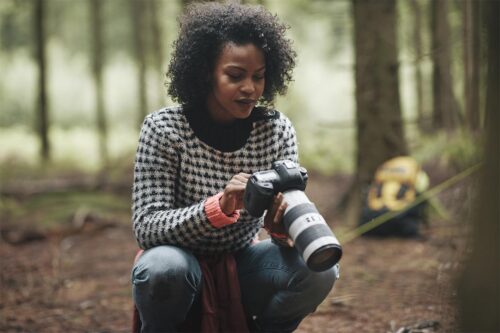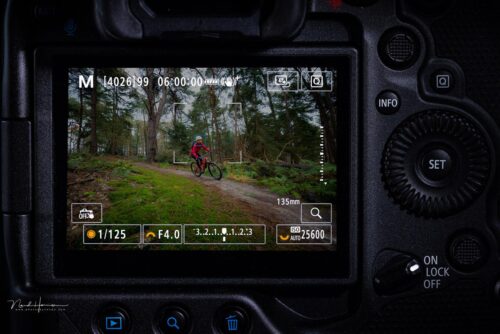Who hasn’t experienced it? Whether children, animals or vehicles – as soon as an object moves, it becomes difficult to take a photo. Who doesn’t have all those photos on their smartphone or camera where only part of an object can be seen? But there are ways to take really good photos of moving objects, as this article shows.
Typical problems
One of the biggest problems has already been mentioned: the movement itself. When the finger presses the shutter release, the object has long since disappeared from the position. The difficulty increases with the proximity of the object.
Basically, it is easier to take a photo of the players on the pitch from the stadium stand than to stand down on the sidelines and take a dribbling photo there. But there are other problems:
â— Distortion – blur and distortion are also well known. Typically the lenses zoom in on a fixed object, if it moves the focus is lost and the object looks distorted.
â— Contrast – contrast is also readily lost when an object moves. This is again due to the adjustment of the lens and the irritation that happens due to the movement.
One of the biggest problems is, of course, that the picture simply no longer fits. Anyone who has ever wanted to photograph a jumping cat or even a flash will be familiar with this problem.
One of the biggest problems is, of course, that the picture simply no longer fits. Anyone who has ever wanted to photograph a jumping cat or even a flash will be familiar with this problem.
Examples of moving objects
Ultimately, everything that is supposed to be in focus in front of the camera and that moves counts as a moving object. Some examples:
- Animals – in the zoo, underwater, the birds, the pets – animals are incredibly difficult to photograph because they are rarely really still. Especially since they can’t be instructed to stay still. In many animal photographs, moreover, the movement is deliberate, because it looks far more impressive when the lion is in action in the zoo than when it is curled up asleep like a house cat.
- Children – Parents would like to capture every developmental step of their little ones on film. But how do you photograph a child taking its first steps? After all, the photo should later show that these were the first steps. Playing and romping children can also only be photographed in motion – standing still would ruin the playing and romping.
- Capturing screenshots of games or slot machines has become a common practice today. However, a challenge arises when attempting to capture the dynamic essence of a game, especially when the aim is to showcase not just a static game logo but the slot machines in action within an online casino environment. It’s worth noting that this challenge primarily pertains to games played on smartphones. On a PC, with the help of the right techniques and software, it’s possible to capture images directly from the screen while the games are in motion. For captivating shots of slots and the thrilling action they offer in the online casino, you can explore a selection of screenshots at Stay Casino slots.
- Nature – nature photography is very popular. If you don’t just want to photograph the surroundings, but want to capture mood, you will see movement: the waves of the sea, the ears of corn in the field swaying in the wind. Rain, hail, storms and clearly thunderstorms are often incredibly difficult to capture correctly in a photo.
Basically, the world is always in motion, which is why there are countless examples of photographing moving objects. All that is missing now is the help that will make the photo successful after all.
How can corresponding photos be taken better?
First of all: these tips do not refer to professional cameras and professional equipment. Most snapshots and everyday photos today are taken with a smartphone or a good digital camera. That’s good, because these devices offer settings:
- Mode – depending on the smartphone or camera, the ‘Sport’ mode can be selected. It is called differently on some devices, but it is used to photograph moving objects. The shutter speed of the camera is reduced in the mode. On other devices, the shutter speed can be changed manually.
- Tripod – if possible, a tripod should be used. It is difficult enough to photograph a moving object, but if your hands are shaking on top of that, it becomes almost impossible.
- Zoom out – the closer the subject is, the more difficult the photography becomes. When zooming out, the shaking of the hands is also less disturbing.
- Position – it is always easier for the camera to focus on a subject when the subject is coming towards the camera. The lion in the zoo is therefore easier to photograph when it is coming straight or at an angle towards the photographer.
- Continuous shooting – the continuous shooting function is immensely helpful with fast-moving subjects. Of course, it is a trick and does not teach you to take good photos, but it does capture that special moment. With the continuous shooting function, many pictures are taken one after the other in a very short time, so there is a higher probability that one of the shots will be good.
- Apps – if you take photos with your smartphone, you should take a look at the special apps for taking flash photos. They take the continuous shooting function to a new level and shoot tens of photos within a second. This is so fast that even flashes are captured in several pictures from their creation to their discharge. Of course, these apps can be used to take completely different photos. A slot game in an online casino can be photographed just as effortlessly as your daughter’s somersault on the trampoline.
In general, it is recommended that you familiarise yourself with the settings and modes of your camera or smartphone. Today’s devices are set up in such a way that even inexperienced photographers can take good photos. Of course, if you have a professional camera, you have a whole range of other options open to you – but these cameras are rarely likely to come along unplanned.
Conclusion – resort to tricks of the trade
It is actually surprising. As difficult as it is to photograph your pet in the perfect position, it is just as difficult to take pictures of it in motion. But with a few tricks of the trade, it can be done. The continuous shooting function in particular is very helpful because it takes a lot of effort away from the photographer. Flash apps further improve the continuous shooting function. But you should also choose your own position well. Photographing a racing car from the side in a sprint is almost impossible. However, taking a picture of the same car as it comes around the corner of the track onto the straight is possible even for amateurs.



